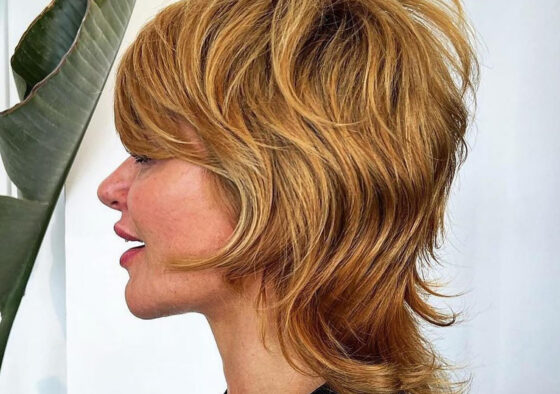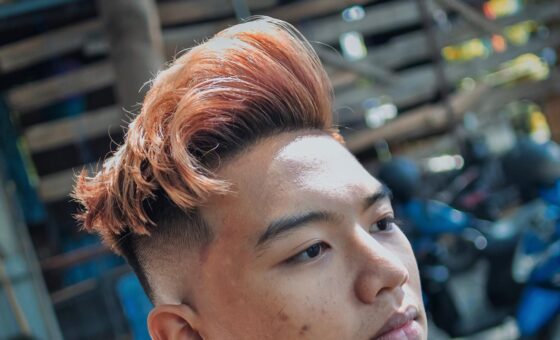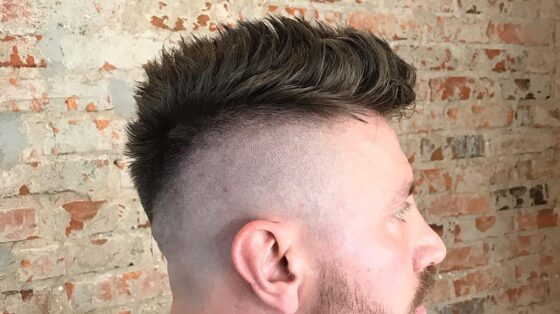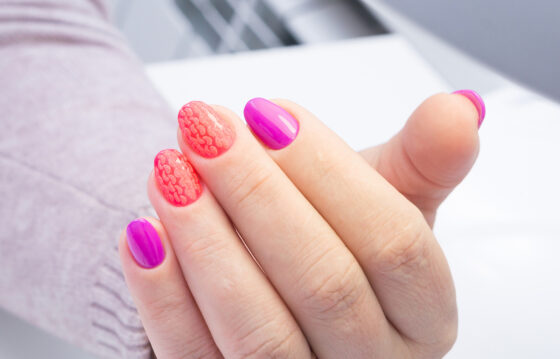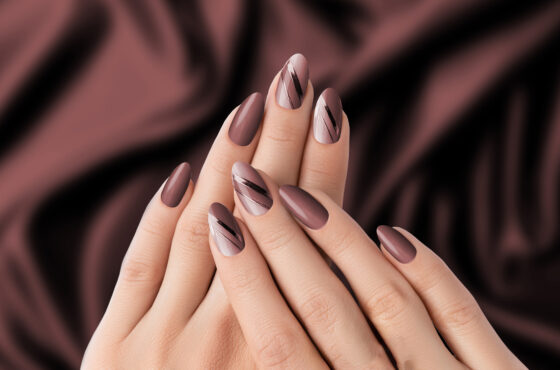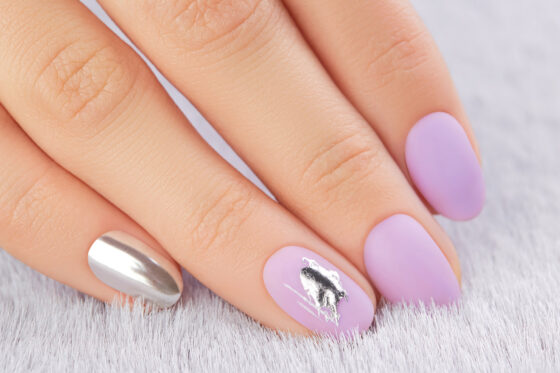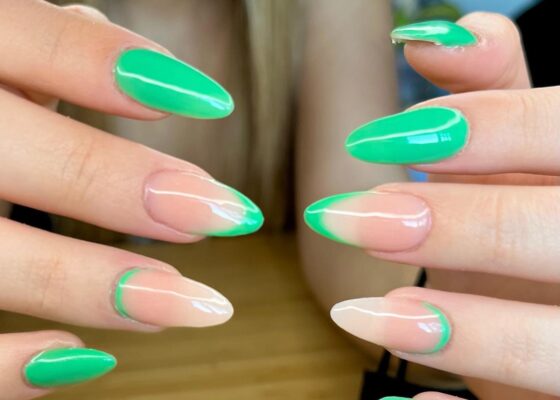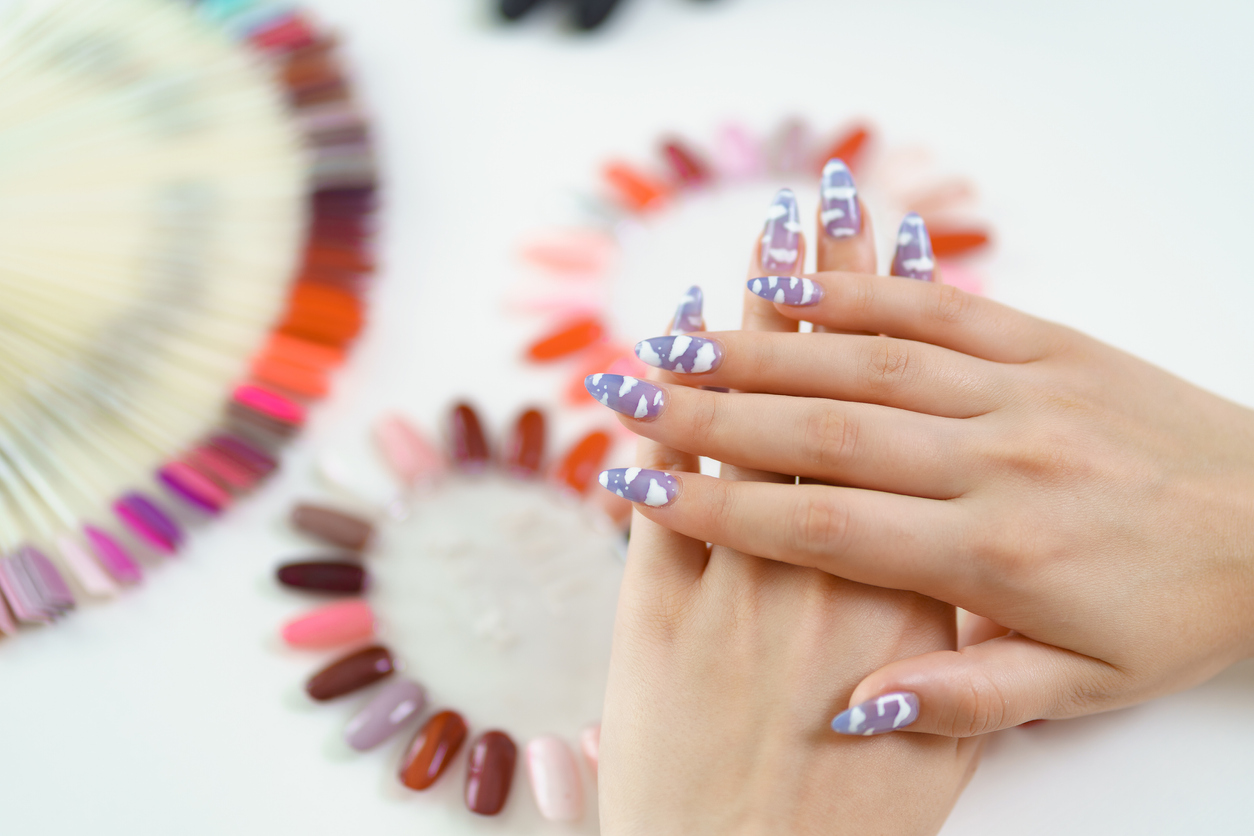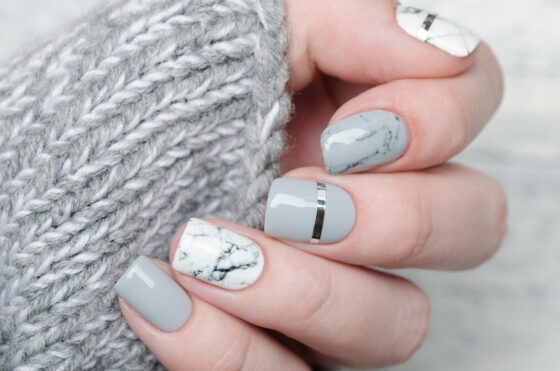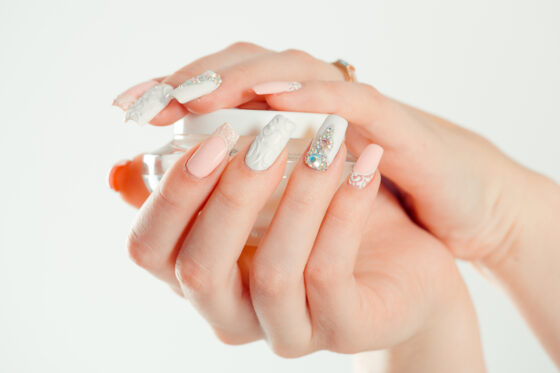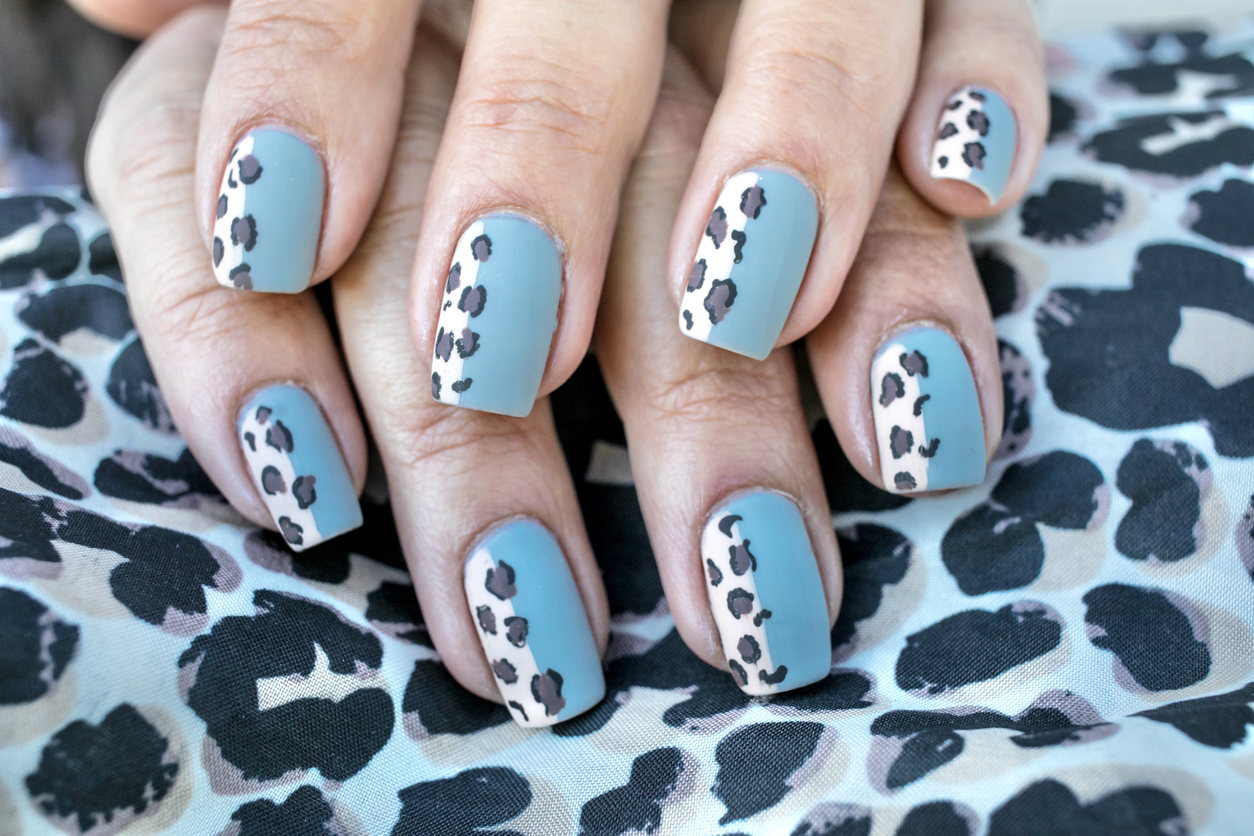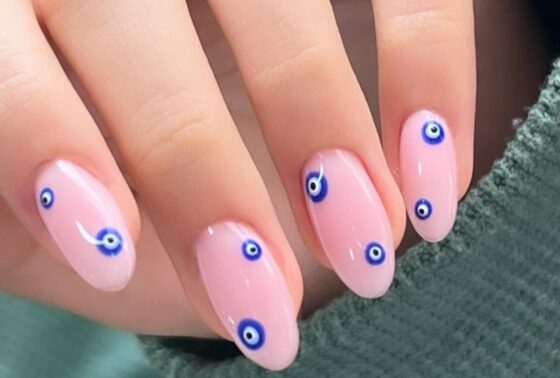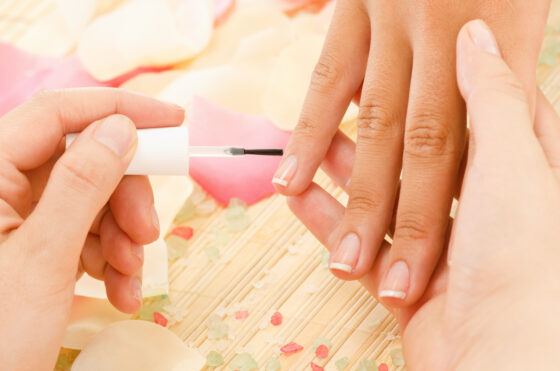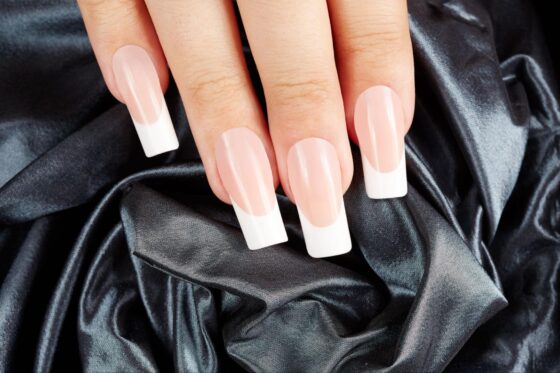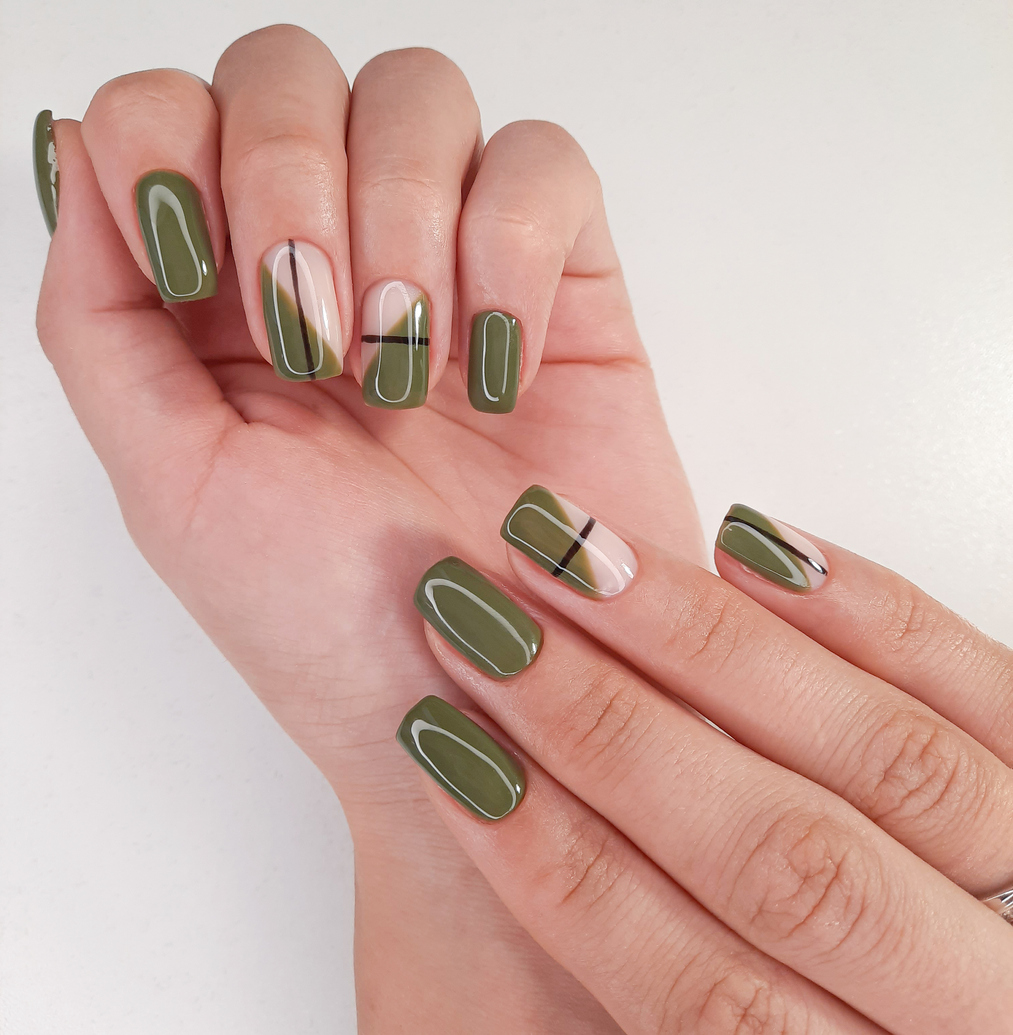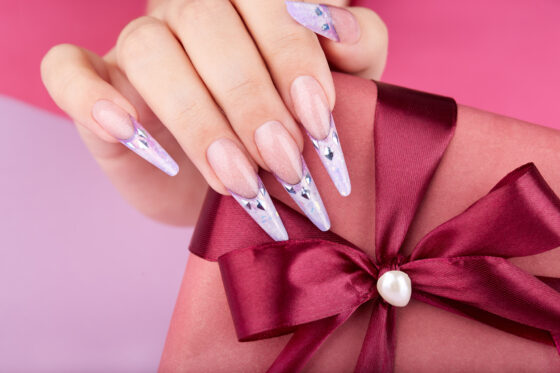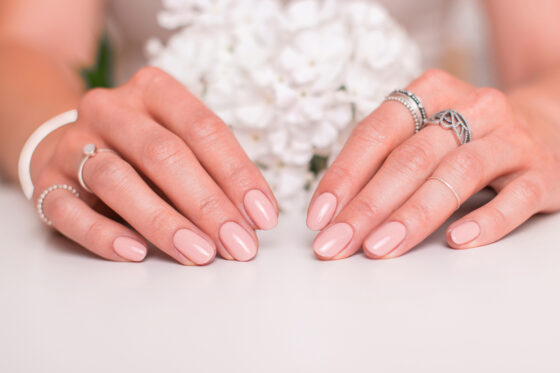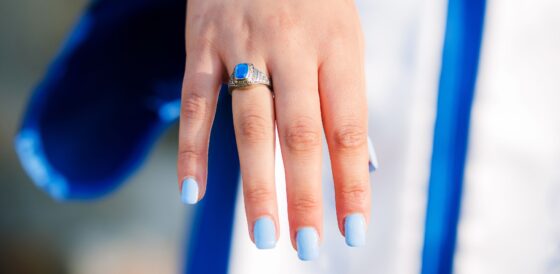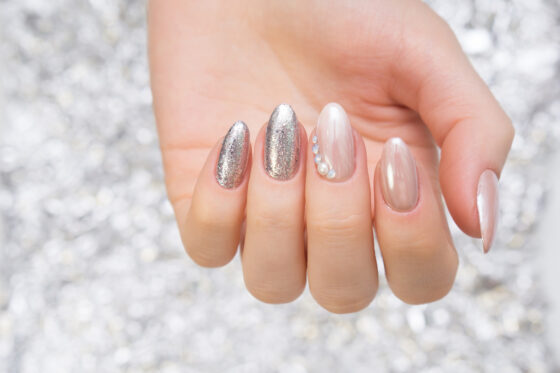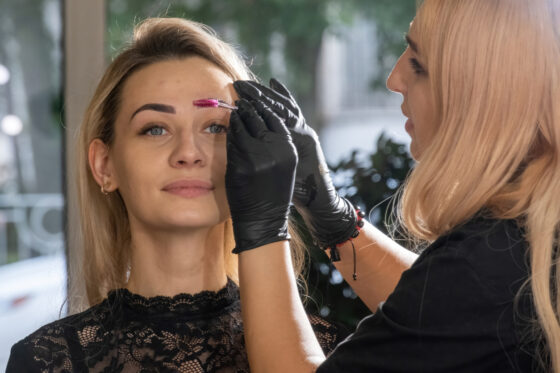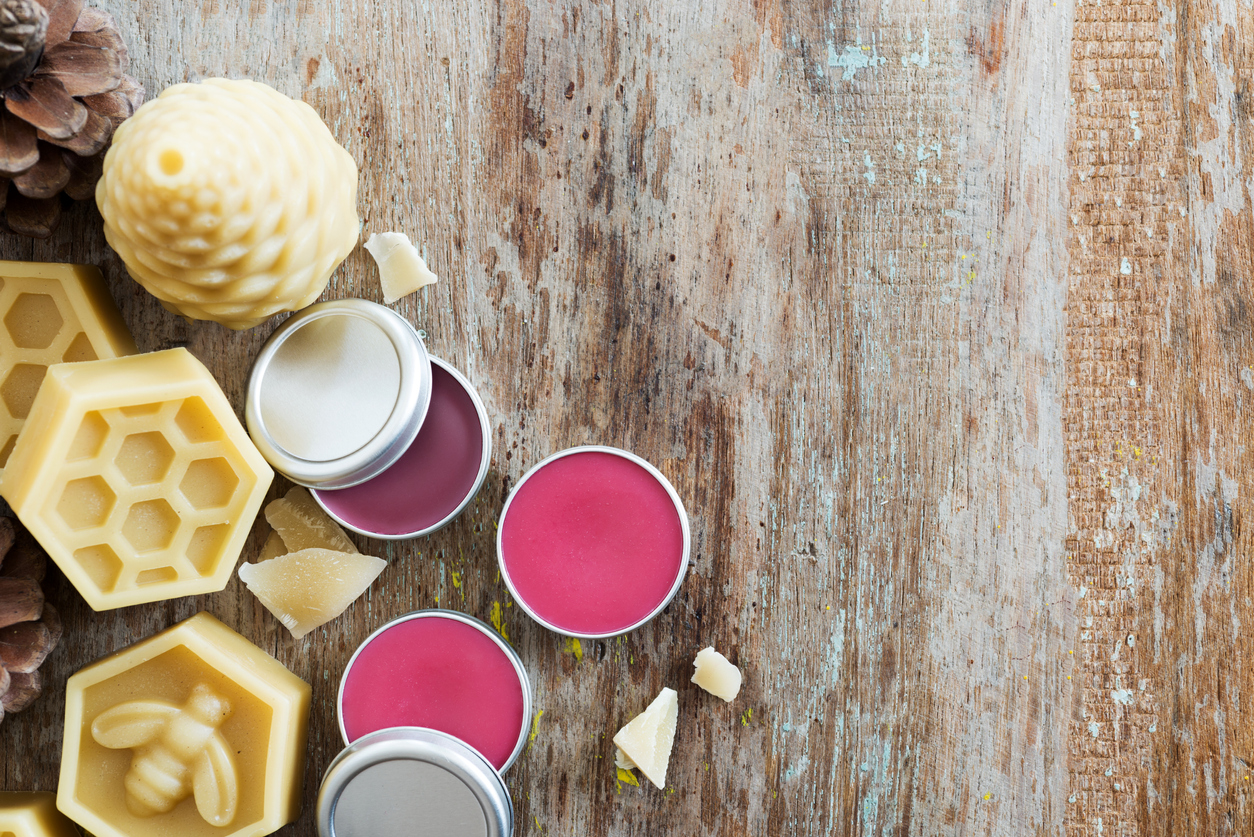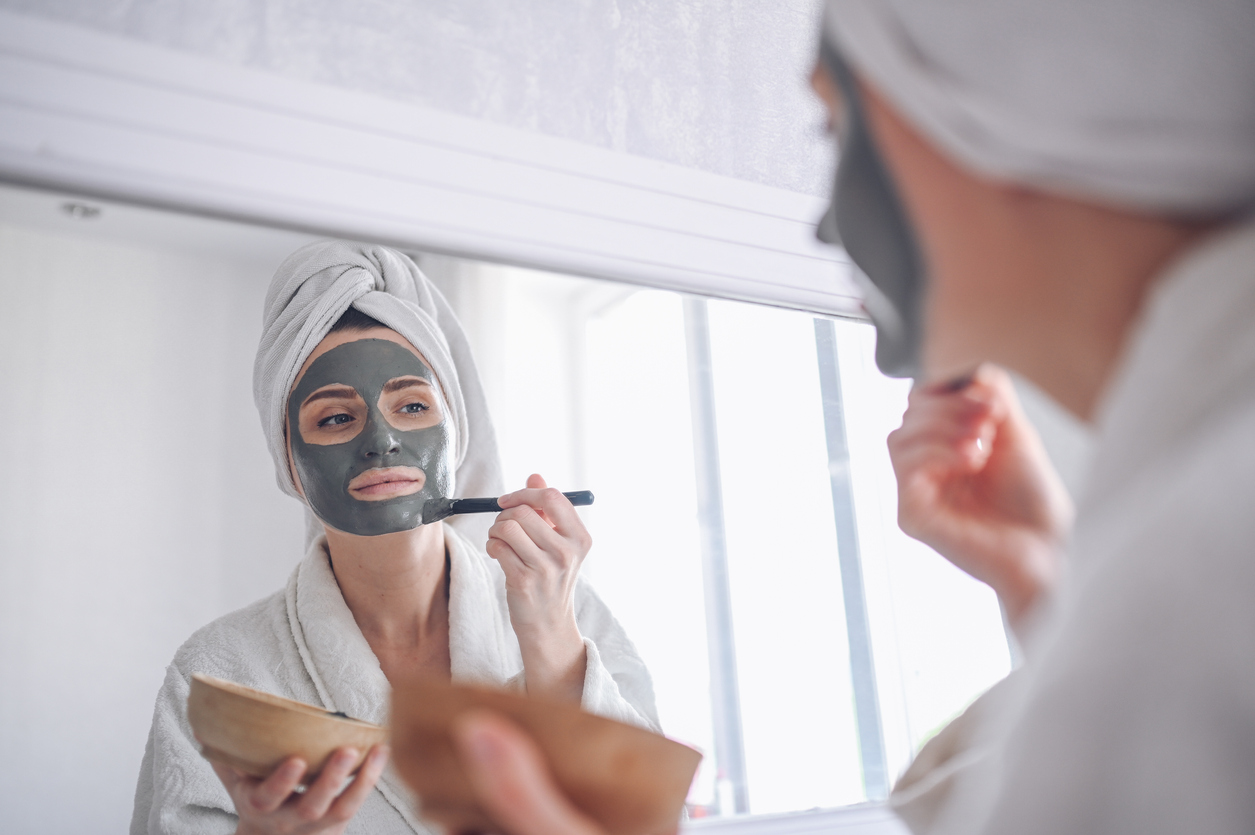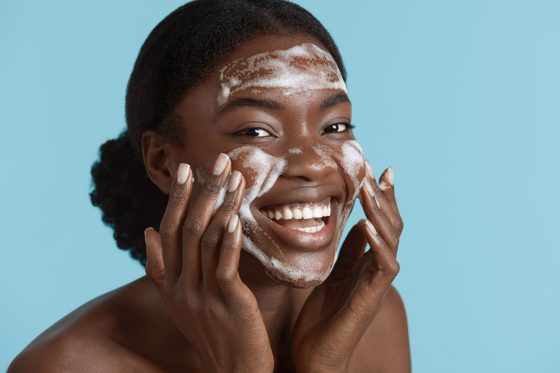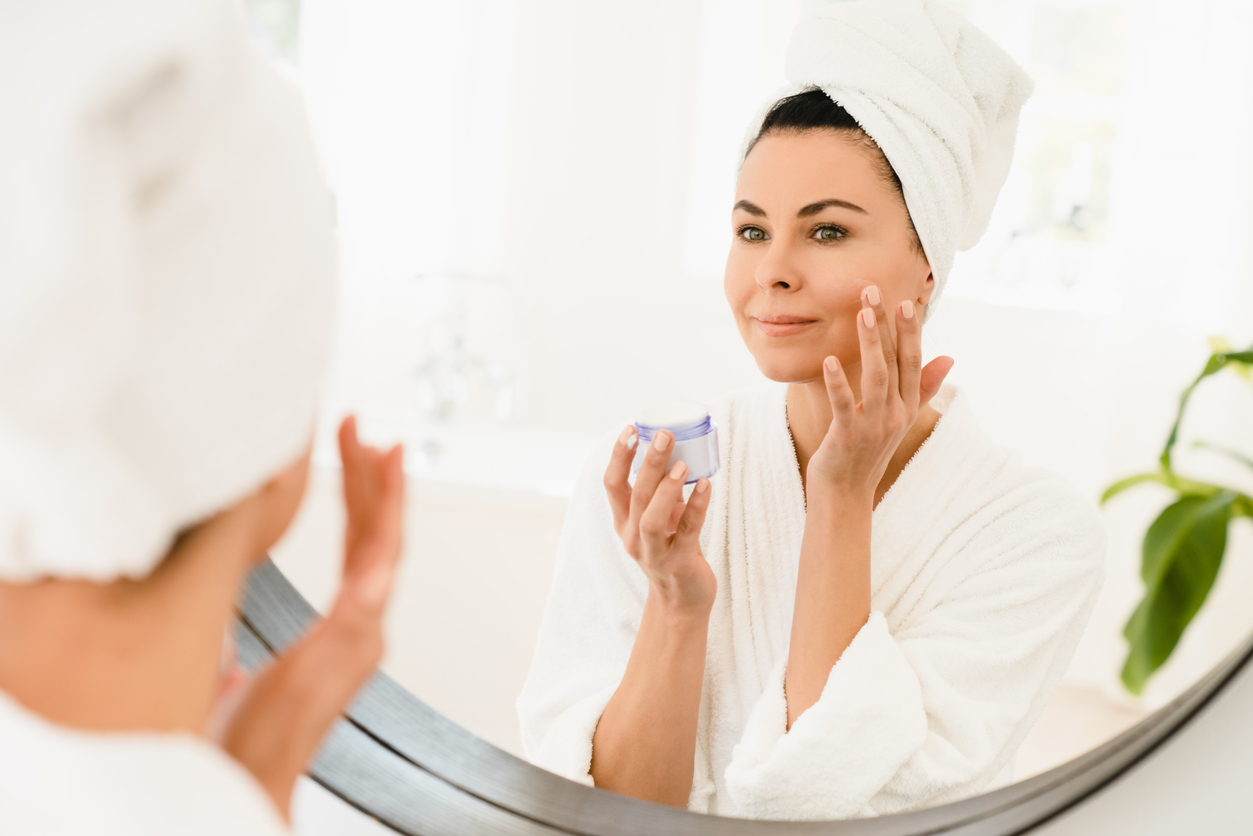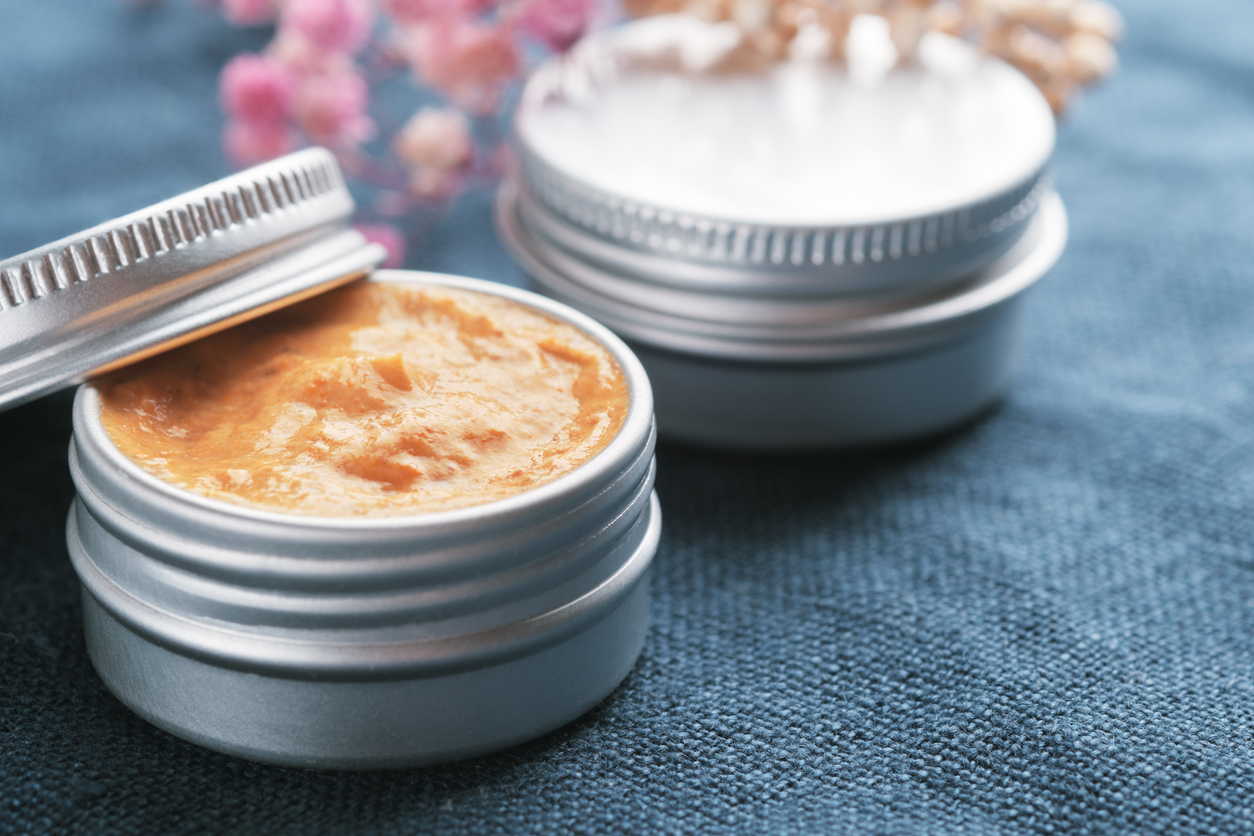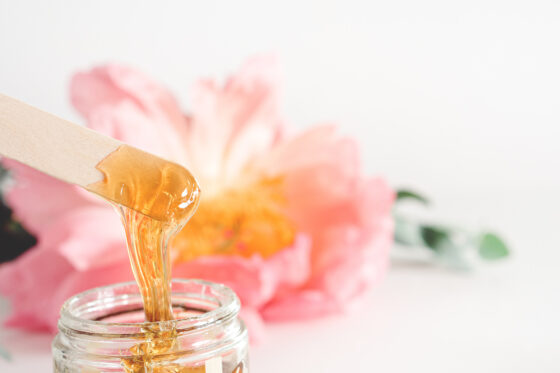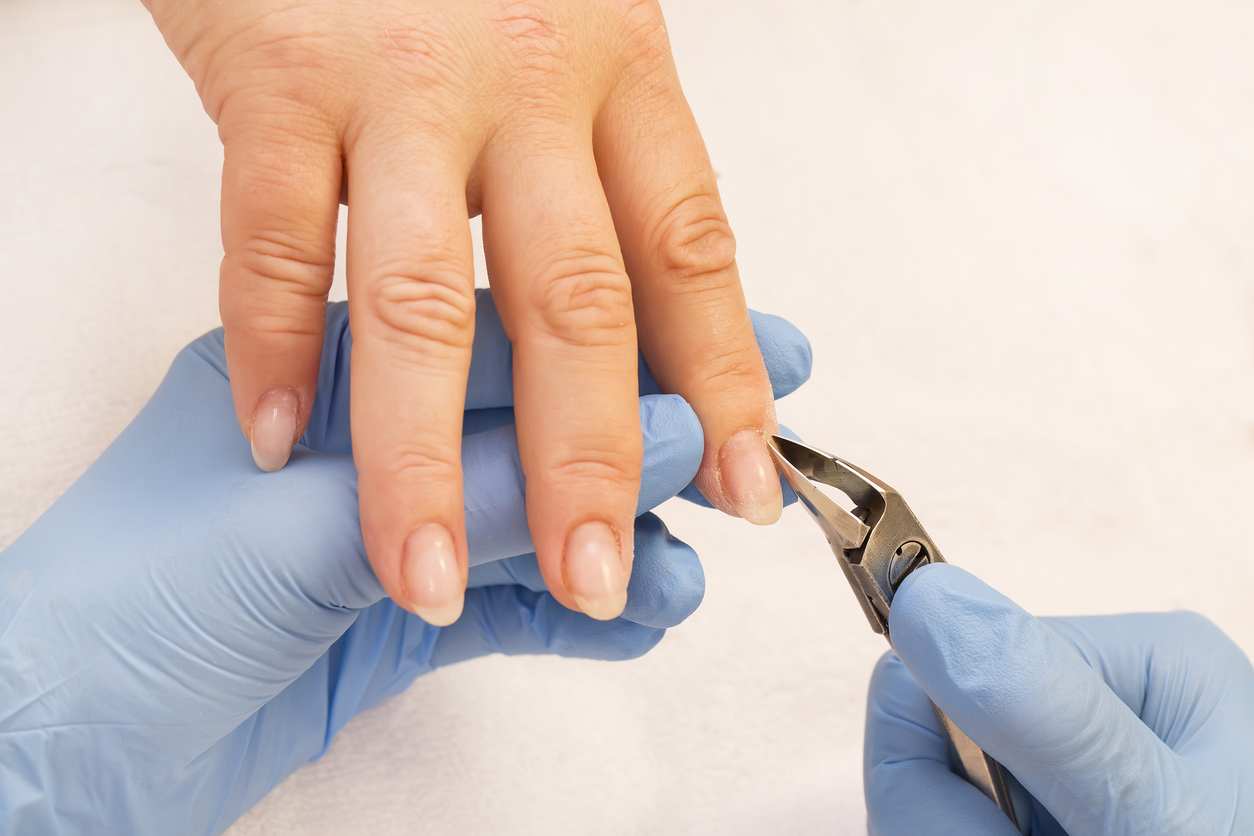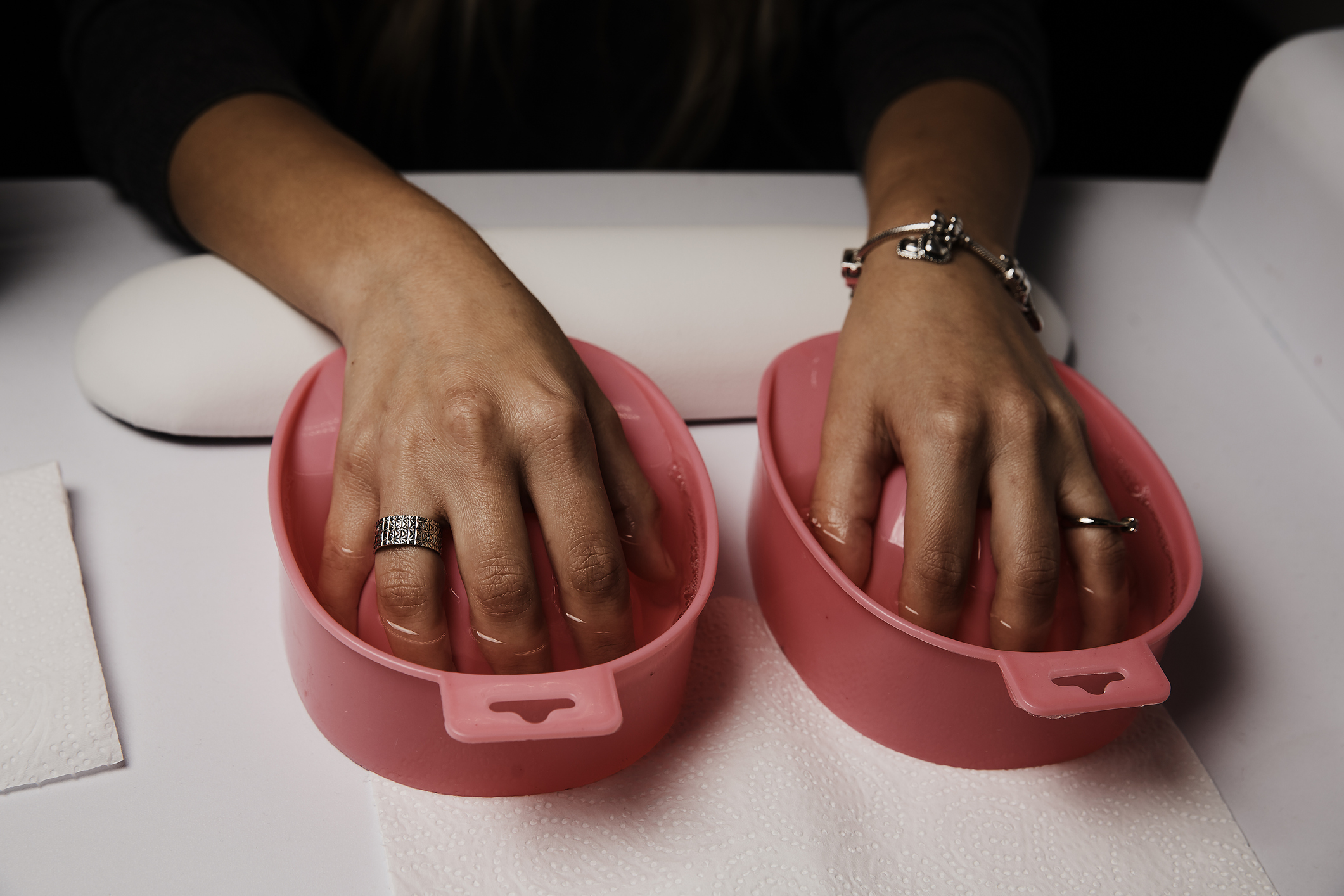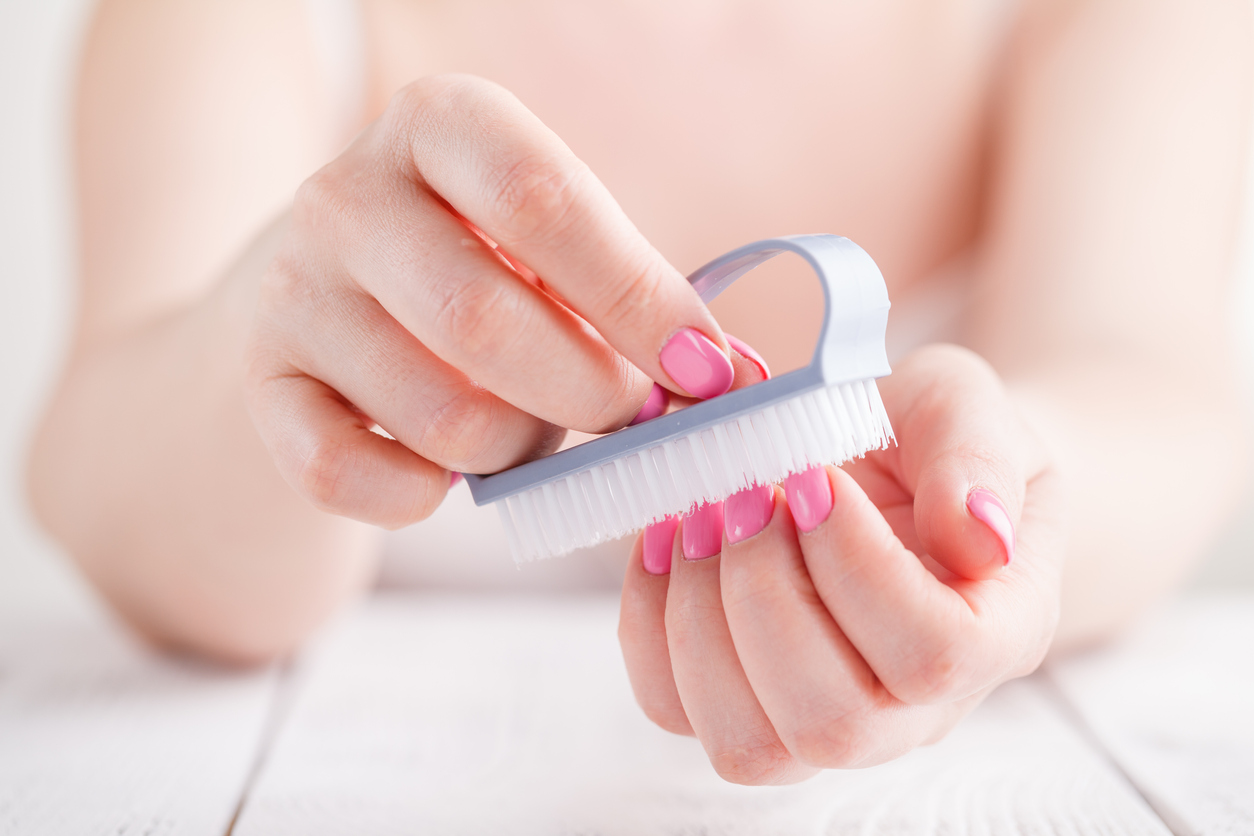Wanting beautiful long nails is not a crime. But, you know what is? Having fingernail fungus from acrylic nails and not knowing how to treat it or how you could have prevented it. Listen, it happens to the best of us, there’s no need to be embarrassed. Let us help you. We have a full guide on different treatment options and ways to prevent this from ever happening again – or if you are here cause you are proactive, then ways to prevent it from ever happening. So, let’s get into all the options you have.
3 Signs of Fingernail Fungus From Acrylic Nails
So, how do you know if you’re dealing with fingernail fungus caused by acrylic nails? Well, there are a few telltale signs that are usually a dead giveaway.
Discoloration
The first sign you should be on the lookout for is a color change. Your once lustrous and vibrant nails may take on a green or yellowish tint. It’s not the kind of green envy we want to instill in others.
But why does this discoloration occur? When you have acrylic nails, moisture can get trapped between the natural nail and the acrylic overlay. This trapped moisture creates a perfect breeding ground for fungi, leading to an undesirable change in color. So, if you notice your nails resembling the shade of Shrek, it’s time to go to the clinic!
Thickening
Have you noticed a sudden increase in the thickness of your nails? If it feels like your nails have taken on a newfound armor-like quality, it could be a sign of fungal invasion. Watch out for any excessive, unwelcome growth!
When acrylic nails are improperly applied or not maintained properly, they can cause trauma to the natural nail bed. This trauma weakens the nail, making it more susceptible to fungal infections. As the fungus starts to take hold, it can cause the nails to thicken as a defensive mechanism. So, if your nails are starting to resemble tiny shields, it’s time to address the underlying issue.
Brittleness and Crumbling
Are your nails more prone to breakage? Do they seem to crumble under the slightest pressure? This fragility could indicate that a fungal fiesta is taking place beneath the surface.
Acrylic nails, when not applied or maintained properly, can cause the natural nails to become weak and brittle. This weakness and fungal infection can lead to nail breakage and crumbling. It’s like a double whammy for your poor nails. So, if your nails are disintegrating faster than a sandcastle at high tide, it’s time to address the root cause.
Now that you know what to look for, let’s delve into how to bid farewell to that pesky fungus.
Treatments – How to Get Rid of Green Nail Fungus
Dealing with green nail fungus can be quite a nuisance, but fear not! Here are five effective treatment options available to help you combat this pesky problem of nail fungus.
Topical Antifungal Medications
One of the most common and effective treatments involves antifungal medications. These powerful warriors come in topical and oral forms, working their magic from the inside out. By targeting the fungus directly, these medications ensure the complete eradication of the green menace.
Over-the-counter creams, ointments, and nail lacquers contain antifungal agents such as:
- Clotrimazole
- Miconazole
- Terbinafine
But if you want something stronger, a doctor can prescribe something like ciclopirox for more severe cases.
Oral Antifungal Medication
If you prefer to just pop a pill instead of applying something directly to the effect area, you also have that choice. Prescription oral medications, such as terbinafine (Lamisil), itraconazole (Sporanox), and fluconazole, are often more effective than topical treatments. However, they may have side effects and require monitoring by a healthcare professional.
Laser Therapy
Laser treatment involves using laser light to target and destroy the fungi causing the infection. While some studies suggest effectiveness, more research is needed, and it may not be covered by insurance.
Surgical Removal
In severe cases, a healthcare provider may recommend surgical removal of the infected nail. This is typically considered when other treatments have failed or the infection is causing significant pain.
Vinegar Soaks
Vinegar soaks can be a great option if you prefer a more natural approach. By creating an inhospitable environment for the fungus, soaking your nails in a mixture of warm water and vinegar can help to inhibit its growth. Plus, as an added bonus, your nails will get a lovely pickling! It’s a win-win situation. Just kidding.
How to Prevent Nail Fungus with Acrylic Nails
Prevention is always better than a cure, as the saying goes. So, here are some proactive measures you can take to keep those nails healthy and fungus-free.
Choose a Reputable Salon
Before entrusting your precious nails to anyone, do your research. Opt for a salon that maintains strict hygiene practices and uses high-quality products. Don’t settle for anything less than the best!
Keep It Clean
Ensure that your nails and the surrounding area are thoroughly cleaned before applying acrylics. Any traces of dirt or oil can create a welcoming environment for unwelcome guests.
Let Them Breathe
Allow your nails to take a breather occasionally. The constant presence of acrylic nails can suffocate your natural nails, providing a favorable environment for fungal growth. So, give them some fresh air and freedom! Using cuticle oil is also a good way to help maintain your nail health, just saying.
Remember, prevention is the key to maintaining healthy and stylish nails. By following these simple tips, you can enjoy the beauty of acrylic nails without the risk of unwanted visitors.
Key Takeaways
Now that you’ve armed yourself with knowledge of fingernail fungus from acrylic nails, let’s quickly recap the key takeaways:
- Watch out for signs like discoloration, thickening, and brittleness.
- Seek appropriate treatments such as antifungal medications or vinegar soaks.
- Prevent fungal invasions by choosing a reputable salon, keeping your nails clean, and letting them breathe.
With these insights, you can confidently navigate the intricate world of acrylic nails and maintain the health and beauty of your natural nails. So go forth, my fellow nail enthusiasts, and slay those fungus monsters!
Final Thought
Although it may seem scary at first, fingernail fungus from acrylic nails is just one of those things that can happen to anyone. It’s annoying and unfortunate, but best of all, it’s treatable and avoidable, and that’s all that matters. By following these preventive measures and being proactive in treating any signs of nail fungus, you can maintain the health and beauty of your natural nails. Remember, your nails are not just something to paint but also an indicator of your overall health. Take care of them and protect them from any fungus monsters!





